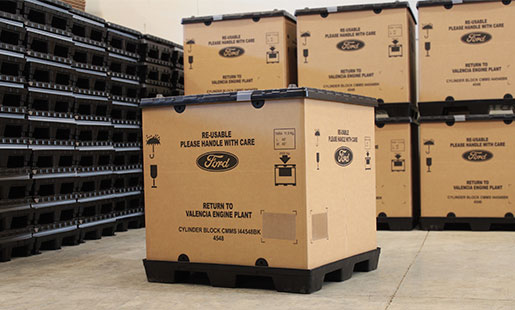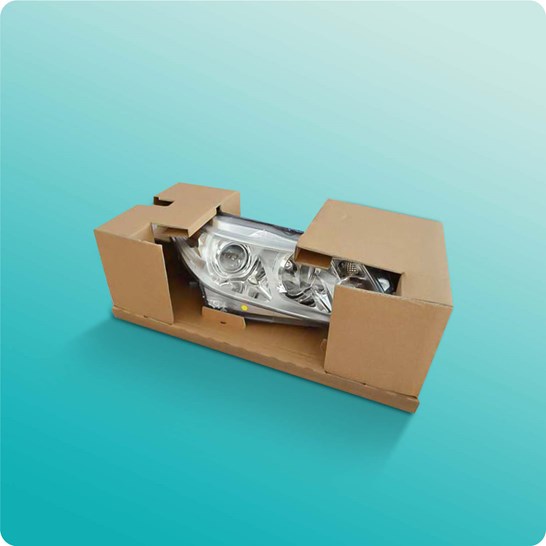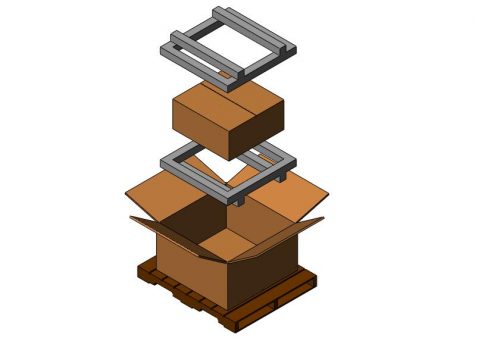Optimum Security: Industrial Packaging Solutions Tailored for Success
Optimum Security: Industrial Packaging Solutions Tailored for Success
Blog Article
Efficient Industrial Recycling Solutions for Sustainable Packaging: A Comprehensive Overview
In today's significantly environmentally-conscious globe, the need for sustainable packaging options has actually never been higher. To fulfill this need, companies across industries are proactively seeking efficient industrial recycling remedies. Nevertheless, browsing the complex landscape of sustainable packaging can be testing without a thorough guide. That's where this comprehensive overview on efficient commercial recycling remedies for lasting packaging comes in. By discovering essential locations such as product packaging product selection, making for recyclability, executing recycling facilities, working together with reusing partners, and tracking and determining reusing success, this overview will furnish you with the expertise and tools needed to make informed decisions and drive positive change within your organization. Whether you're a product packaging specialist, sustainability manager, or just thinking about the topic, this overview will provide useful insights and strategies to help you browse the globe of lasting product packaging.
Product Packaging Material Choice
The choice of packaging materials plays an essential function in ensuring the sustainability of industrial recycling services. When it concerns lasting product packaging, the selection of materials is essential in reducing environmental effect and maximizing reusing performance. Selecting the ideal materials can aid minimize waste generation, preserve sources, and promote a circular economic climate.
Materials like cardboard, paper, glass, and specific kinds of plastics can be reused several times without losing their top quality. On the other hand, materials that are tough to recycle, such as blended plastics or non-recyclable compounds, can produce challenges for the recycling procedure and may end up in burners or land fills.
One more consideration is using eco-friendly and renewable materials. Product packaging made from renewable resources, such as plant-based plastics or biopolymers, can aid reduce dependence on nonrenewable fuel sources and mitigate climate adjustment. In addition, biodegradable products damage down naturally in time, decreasing the build-up of waste in landfills.
Additionally, the weight and quantity of packaging materials must be decreased to minimize transport expenses and energy usage. Lightweight products not only need fewer sources throughout manufacturing however also contribute to decrease carbon emissions throughout transport.
Designing for Recyclability
In order to make sure the recyclability of product packaging products, thoughtful design is necessary. Creating for recyclability includes producing product packaging that can be quickly sorted, separated, and refined in recycling centers. One vital aspect of creating for recyclability is the selection of products. Product packaging designers must prioritize using materials that are widely approved for recycling and have developed reusing facilities. Materials such as glass, light weight aluminum, and certain kinds of plastic, like family pet and HDPE, are typically recycled and should be chosen over products that are costly or challenging to recycle.
An additional vital factor to consider in creating for recyclability is the removal of unnecessary components or materials. By decreasing the number of layers, coatings, and added elements, packaging can be made simpler and much easier to reuse. Additionally, designers should intend to reduce the use of combined materials, as they can complicate the reusing process.

Implementing Recycling Framework
Effective execution of recycling framework is critical for the success of industrial reusing remedies. Without proper infrastructure in place, the reusing procedure becomes ineffective and ineffective, preventing the overall objective of sustainable packaging.
To execute recycling framework successfully, several essential aspects require to be considered. There should be a well-organized collection system that helps with the splitting up and collection of recyclable products. This can consist of assigned recycling containers in public spaces, along with collaborations with waste administration companies for curbside pickup and sorting.
Once gathered, the recyclable materials need to be transferred to reusing facilities in a prompt manner. This requires reliable logistics and transportation networks, guaranteeing that the materials get to the ideal centers without hold-up.
At the reusing facilities, progressed sorting and handling innovations ought to be in area to separate different kinds of products successfully. This consists of making use of automated sorting devices, optical scanners, and hand-operated sorting methods.
Moreover, there must be a robust market need for recycled materials. This can be attained through partnerships with suppliers and markets that use recycled products in their production processes. Developing a secure market for recycled products incentivizes the recycling industry and promotes the circular economic situation.
Working Together With Recycling Allies

One trick facet of working together with reusing companions is the establishment of clear interaction channels. It is vital to establish open lines of communication to help with the exchange of details, updates, and responses. This permits both celebrations to stay educated about the development of recycling efforts and attend to view website any kind of obstacles or concerns that may emerge.
Furthermore, partnership can include joint initiatives in developing and executing recycling programs. Reusing companions can give beneficial insights and advice in developing reliable collection systems and figuring out one of the most ideal recycling innovations. By functioning together, businesses and reusing partners can optimize the reusing process and minimize waste.
Moreover, collaboration can extend past the operational elements of reusing. It can additionally encompass advocacy and education and learning efforts. By signing up with forces, services and reusing partners can increase recognition regarding the significance of reusing and advertise the fostering of lasting packaging practices among customers and various other stakeholders.
Tracking and Measuring Recycling Success
To make sure the efficiency of commercial recycling options and the accomplishment of lasting product packaging objectives, it is essential for organizations and their reusing partners to establish a thorough system for monitoring and measuring reusing success (industrial metal packaging). Gauging and tracking recycling success permits organizations to examine the effect of their recycling efforts, recognize locations for renovation, and set significant targets for future progress
One method to track reusing success is with the usage of data collection and analysis tools. By gathering information on the quantity of product packaging waste generated, the percentage of waste that is reused, and the kinds of materials being recycled, businesses can obtain valuable understandings right into their recycling efficiency. This data can then be evaluated to determine fads, patterns, and areas of inadequacy.
One more vital facet of tracking and measuring recycling success is establishing standard and clear metrics. This allows companies to contrast their performance versus market benchmarks and track their progression with time. Metrics such as recycling rates, waste diversion rates, and greenhouse gas emissions can supply a measurable action of a service's recycling success.

Verdict
In verdict, implementing efficient commercial recycling services for lasting product packaging requires careful factor to consider of packaging product option, designing for recyclability, executing recycling framework, working together with recycling companions, and tracking and determining recycling success. By incorporating these techniques, businesses can add to a image source more lasting and environmentally-friendly method to packaging, decreasing waste and promoting the circular economic climate.
By discovering vital locations such as packaging material selection, designing for recyclability, carrying out reusing framework, collaborating with reusing partners, and tracking and determining recycling success, this guide will certainly outfit you with the knowledge and tools needed to make informed decisions and drive favorable adjustment within your company. Product packaging designers must focus on the usage of materials that are commonly accepted for recycling and have actually established recycling frameworks.Collaboration with reusing companions is essential for the successful implementation of commercial reusing remedies and the accomplishment of sustainable product packaging goals. By signing up with pressures, services and recycling partners can raise awareness about the relevance of recycling and advertise the fostering of important link lasting product packaging practices among consumers and other stakeholders.
By collecting information on the quantity of packaging waste created, the percentage of waste that is reused, and the kinds of products being reused, companies can acquire useful insights right into their reusing performance.
Report this page